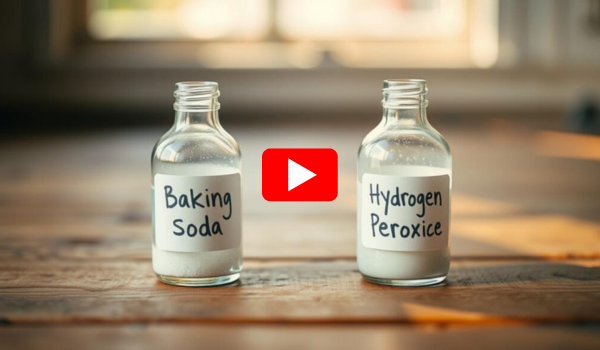What Kills Toenail Fungus Permanently? Effective Treatments
Contents
- 1 What is Toenail Fungus?
- 2 Why is Toenail Fungus So Hard to Get Rid Of?
- 3 What Kills Toenail Fungus Permanently?
- 3.1 1. Prescription Oral Antifungal Medications
- 3.2 Most Commonly Prescribed Oral Antifungals:
- 3.3 2. Topical Antifungal Treatments
- 3.4 Popular Topical Antifungals:
- 3.5 3. Laser Therapy
- 3.6 4. Natural and Home Remedies
- 3.7 Some of the Most Popular Natural Remedies:
- 3.8 5. Surgical Nail Removal
- 3.9 Types of Nail Removal:
- 4 How to Prevent Toenail Fungus from Coming Back
- 5 How Long Does It Take to Kill Toenail Fungus Permanently?
- 6 Final Thoughts: How to Finally Say Goodbye to Toenail Fungus
Toenail fungus is one of those stubborn health issues that tends to stick around far longer than it should, and when left untreated, it can lead to thickened, discolored, brittle, and sometimes even painful nails.
Officially called onychomycosis, toenail fungus affects an estimated 13% of the global population at any given time.
Discover proven treatments that kill toenail fungus permanently. Learn how to clear an infection and prevent it from coming back for healthy, clear nails.
If you’ve been dealing with this unsightly and persistent problem, chances are you’ve asked yourself this very important question: What kills toenail fungus permanently?
In this comprehensive guide, we’ll explore the different causes of toenail fungus, why it can be so difficult to get rid of, proven medical and natural treatment options, and most importantly, strategies you can use to kill toenail fungus permanently and prevent it from coming back.
What is Toenail Fungus?
Toenail fungus is an infection that occurs when fungi — typically dermatophytes, yeasts, or non-dermatophyte molds — invade the nail bed or the surrounding skin.
These microscopic organisms thrive in warm, moist environments, which is why toenail fungus is so common, especially among people who wear closed-toe shoes, frequent communal showers, or experience foot injuries.
Common Symptoms of Toenail Fungus:
- Yellow, brown, or white discoloration of the nail
- Thickened, brittle, or crumbling nails
- Nails separating from the nail bed
- A foul odor is coming from the infected area
- Pain or discomfort in severe cases
Why is Toenail Fungus So Hard to Get Rid Of?
The biggest challenge with toenail fungus is that it lives beneath the hard surface of the nail, making it difficult for topical treatments to reach the infected area effectively.
Additionally, toenails grow slowly, which means that even if you successfully kill the fungus, it can take several months for a new, healthy nail to grow out and fully replace the damaged one.
Toenail fungus also tends to recur if not treated properly or if preventive steps aren’t taken after treatment.
What Kills Toenail Fungus Permanently?
The good news is that with the right combination of medical treatments, natural remedies, and lifestyle adjustments, you can kill toenail fungus permanently and enjoy clear, healthy nails once again.
Let’s dive into the most effective options available today:
1. Prescription Oral Antifungal Medications
If your toenail fungus is advanced or has spread to multiple nails, a doctor may recommend prescription oral antifungal drugs. These medications treat the infection from the inside out, penetrating the nail bed and bloodstream.
Most Commonly Prescribed Oral Antifungals:
-
Terbinafine (Lamisil): Typically taken once a day for 6 to 12 weeks.
-
Itraconazole (Sporanox): Often used for people who can’t tolerate terbinafine.
-
Fluconazole (Diflucan): An alternative, especially for yeast infections.
Pros:
- High success rates (60-80%)
- Treats the infection systemically
Cons:
- Potential side effects: liver damage, gastrointestinal issues, headaches
- Requires regular liver function monitoring
Best for: Persistent or severe fungal infections involving several toenails.
2. Topical Antifungal Treatments
For mild to moderate cases, topical antifungal products are often the first line of defense. These come in the form of creams, ointments, lacquers, and medicated nail polishes.
Popular Topical Antifungals:
-
Efinaconazole (Jublia)
-
Ciclopirox (Penlac)
-
Tavaborole (Kerydin)
Pros:
- Non-invasive
- Minimal side effects
- Can be used long-term
Cons:
- Less effective on their own for deep, severe infections
- Requires consistent daily application for 6-12 months
Best for: Early-stage infections or as a complementary treatment with oral medications.
3. Laser Therapy
Laser treatment for toenail fungus has gained popularity as a non-invasive, pain-free option that targets the fungus using focused light energy. The laser penetrates through the nail to kill the fungus underneath without damaging the surrounding tissue.
Pros:
- Safe and virtually painless
- No side effects
- No need for systemic medications
Cons:
- Multiple sessions typically required
- Expensive (not usually covered by insurance)
- Effectiveness varies (40-70% success rate)
Best for: Individuals who want an alternative to medication or for those who haven’t responded to other treatments.
4. Natural and Home Remedies
While medical treatments are typically the most reliable way to kill toenail fungus permanently, many people successfully manage and even eradicate fungal infections with natural home remedies — especially in the early stages.
Some of the Most Popular Natural Remedies:
- Tea Tree Oil: A potent antifungal essential oil. Apply 100% pure tea tree oil to the affected nail twice daily.
- Apple Cider Vinegar: Soak feet in a mixture of one part vinegar and two parts warm water for 20 minutes daily.
- Oregano Oil: Contains thymol, a natural antifungal compound. Use it similarly to tea tree oil.
- Vicks VapoRub: Contains camphor and eucalyptus oil, which have mild antifungal properties. Apply to the nail daily.
Pros:
- Affordable
- Minimal risk of side effects
- Easy to apply at home
Cons:
- Varying degrees of effectiveness
- Requires patience and consistency
Best for: Early or mild infections, maintenance after medical treatment, or individuals preferring natural options.
5. Surgical Nail Removal
In severe cases where the infection is unresponsive to other treatments or causing significant pain, a doctor may recommend removing the entire nail surgically.
Types of Nail Removal:
-
Partial Nail Avulsion: Removes part of the infected nail.
-
Total Nail Avulsion: Removes the entire nail.
After removal, antifungal treatments are applied directly to the nail bed to kill any remaining fungi before the nail grows back.
Pros:
- Immediate removal of infected tissue
- Allows direct treatment of the nail bed
Cons:
- Can be painful
- Recovery time required
- Potential for nail deformity
Best for: Severe, persistent infections not responding to medication.
How to Prevent Toenail Fungus from Coming Back
Successfully killing toenail fungus is only half the battle. Preventing reinfection is just as important to maintain healthy, clear nails long-term.
Key Prevention Tips:
- Practice Good Foot Hygiene: Wash and dry your feet thoroughly, especially between the toes.
- Keep Nails Trimmed and Clean: Regularly trim toenails straight across and file down thickened areas.
- Change Socks Daily: Moisture-wicking socks are ideal.
- Use Antifungal Foot Powder: Helps keep feet dry and fungal growth at bay.
- Avoid Walking Barefoot in Public Areas: Especially gyms, locker rooms, and communal showers.
- Disinfect Shoes Regularly: Use antifungal sprays or powders inside shoes.
- Choose Breathable Footwear: Avoid tight, non-ventilated shoes.
- Don’t Share Nail Tools: Always use clean, personal grooming tools.
How Long Does It Take to Kill Toenail Fungus Permanently?
Unfortunately, toenail fungus treatment isn’t an overnight fix. Even after the fungus is dead, you’ll need to wait for a new, healthy nail to fully grow out, which can take 6-12 months, depending on the individual’s nail growth rate.
Consistency is key, whether you’re using prescription medication, natural remedies, or laser therapy. Skipping treatments or discontinuing them early often leads to recurrence.
Final Thoughts: How to Finally Say Goodbye to Toenail Fungus
Toenail fungus might be a common problem, but it doesn’t have to be a permanent one. The key to killing toenail fungus permanently lies in choosing the right treatment for your situation, sticking with it consistently, and making small lifestyle adjustments to keep the infection from coming back.
While mild cases may respond well to natural remedies like tea tree oil or apple cider vinegar, moderate to severe infections often require prescription antifungals, laser therapy, or even surgical nail removal for a lasting solution. The earlier you catch and treat toenail fungus, the easier it is to eliminate it.
Remember, no matter which treatment you choose, patience and consistency are crucial. Toenails grow slowly, and it can take several months for clear, healthy nails to replace infected ones.
Combine your treatment with good foot hygiene, proper nail care, and preventive habits to ensure that once you’ve beaten toenail fungus, it stays gone for good.
.
References
https://www.ncbi.nlm.nih.gov/pmc/articles/PMC4821259/
https://www.healthline.com/health/toenail-fungus
https://www.medicalnewstoday.com/articles/322510
https://www.webmd.com/skin-problems-and-treatments/guide/fungal-nail-infections
https://www.mayoclinic.org/diseases-conditions/nail-fungus/symptoms-causes/syc-20353294



